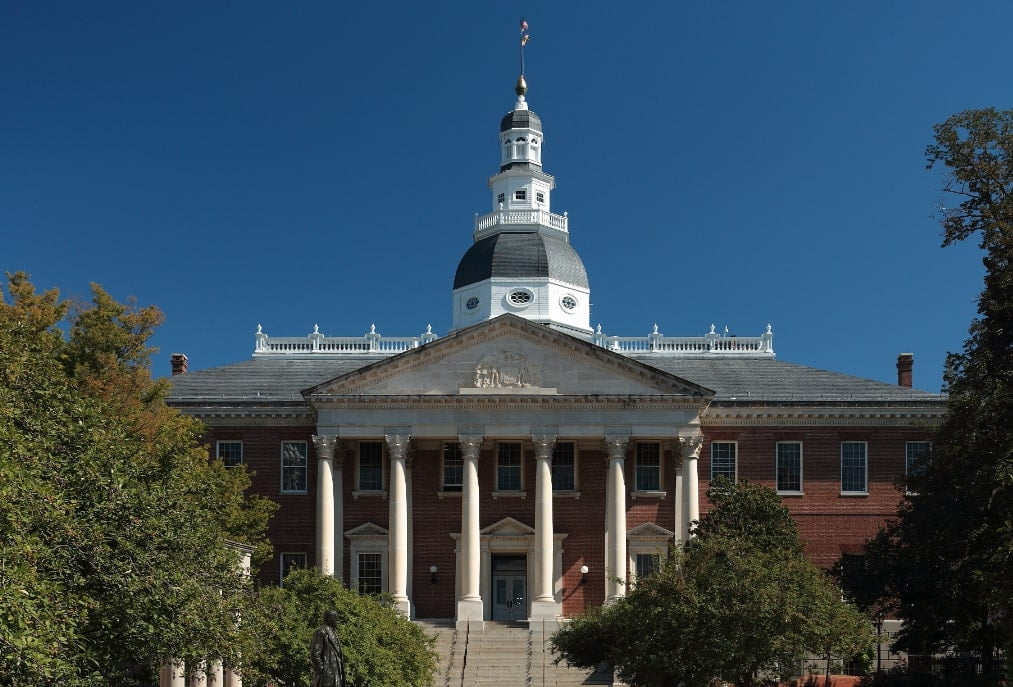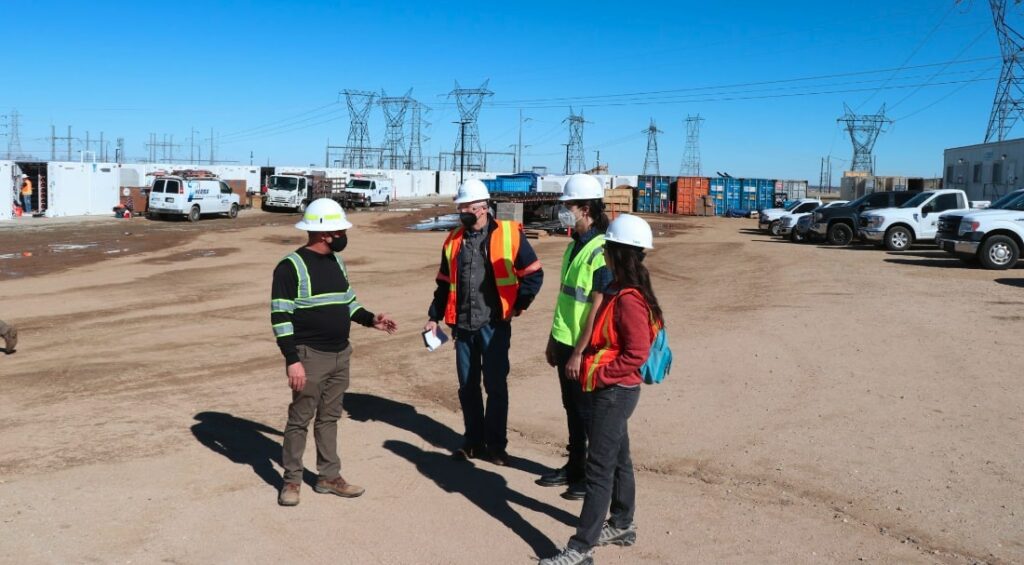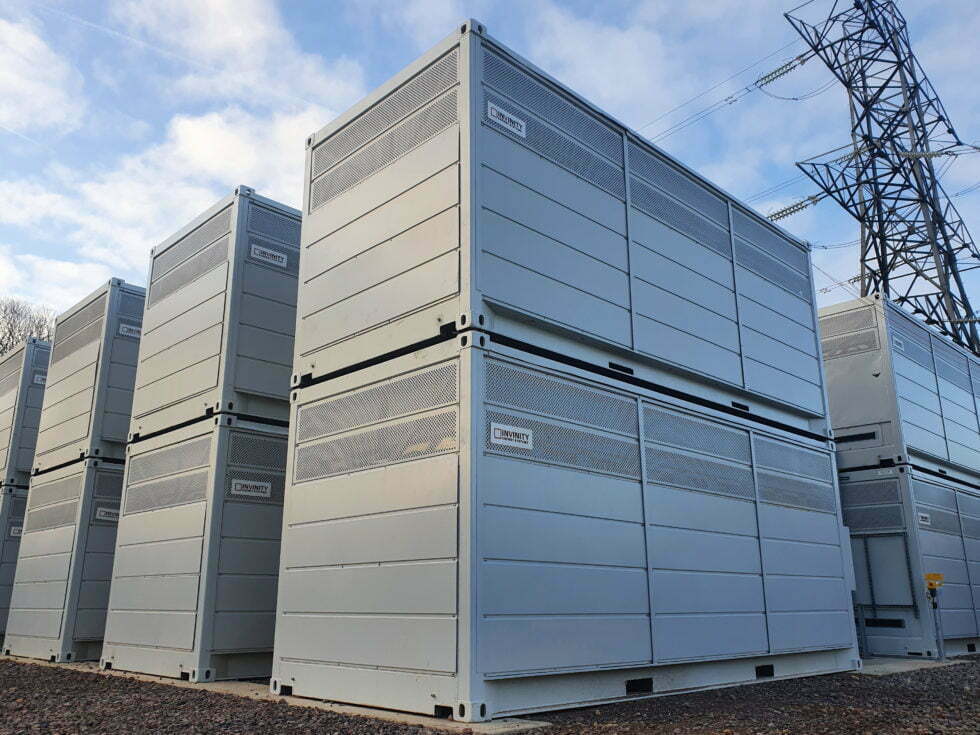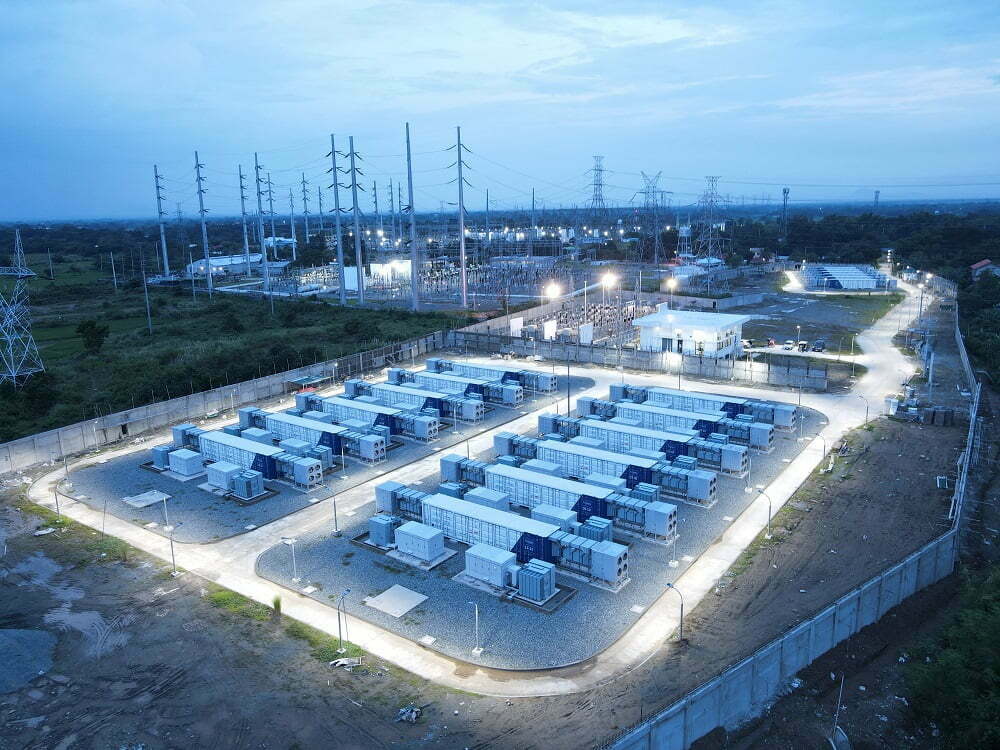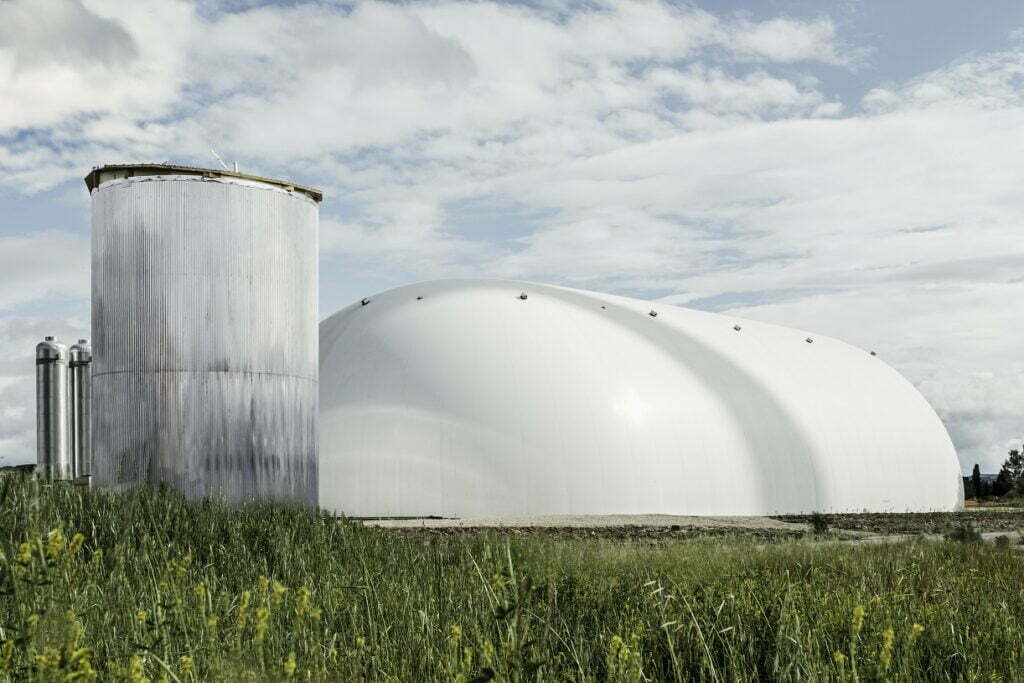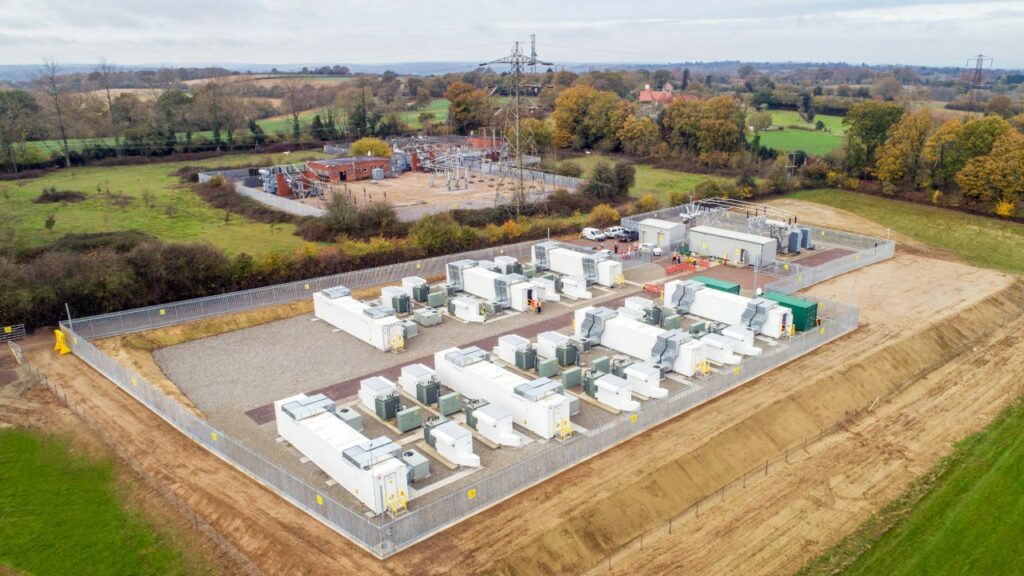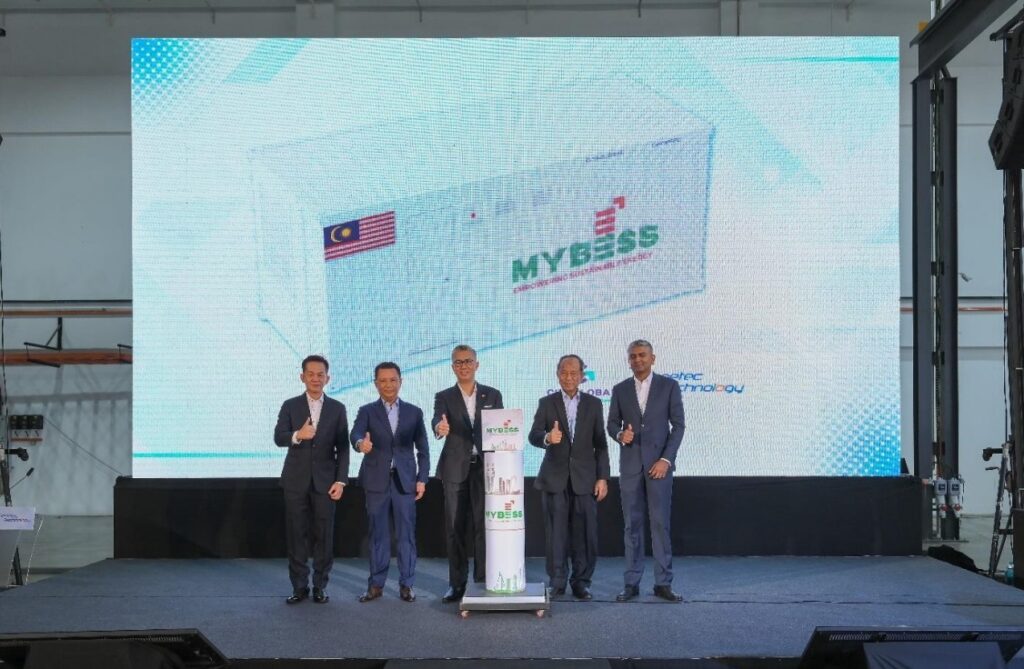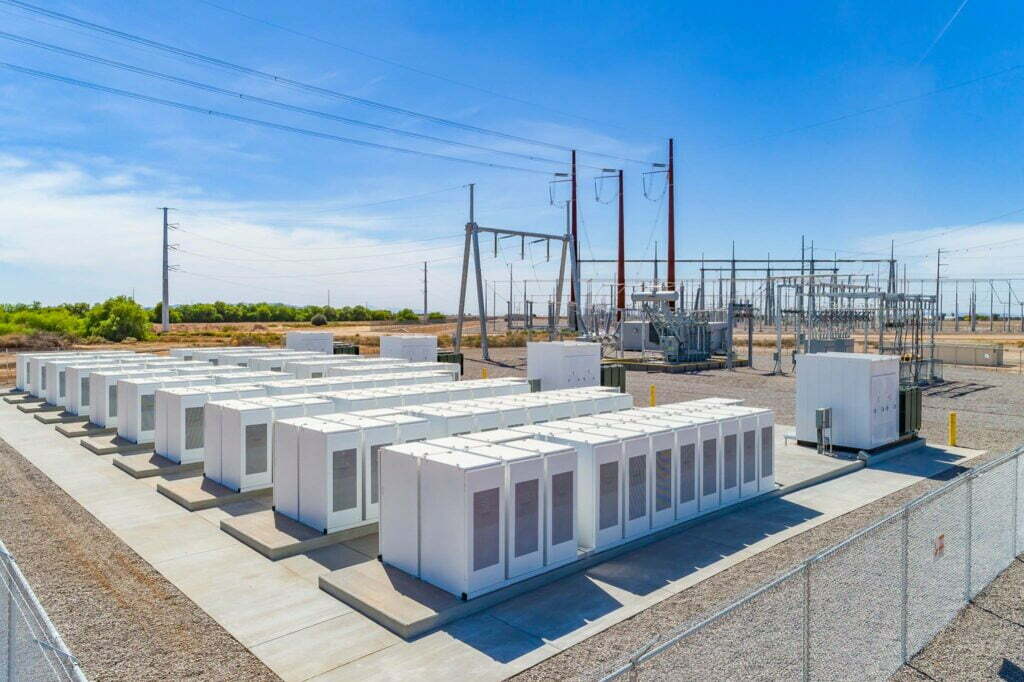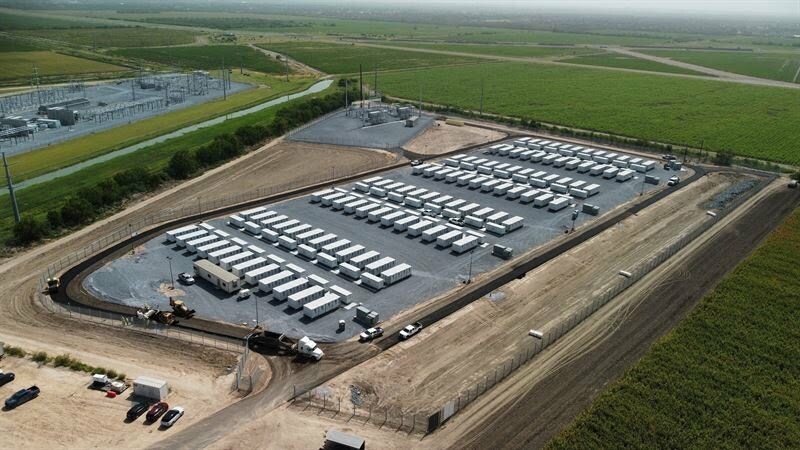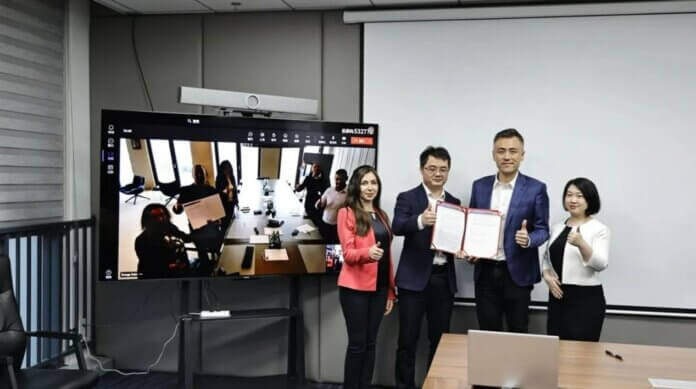Energy Dome’s 2.5MW/4MWh demonstration plant in Sardinia, Italy. Image: Energy Dome
‘CO2 Battery’ startup Energy Dome was only founded in 2020 but has drawn the attention of media and investors alike already.
The company, headquartered in Lombardi, Italy, was launched by CEO Claudio Spadacini to address the need for long-duration energy storage (LDES) at scale. A megawatt-scale commercial demonstrator is already up and running in Sardinia, combining the storage of energy under an inflatable dome that is claimed to be safe, standardised, and crucially, cheap.
Danish energy company Ørsted is exploring the feasibility of a 20MW/200MWh CO2 Battery plant, and at the beginning of this year Energy Dome got €17.5 million (US$18.5 million) in grant and equity financing committed to from the European Union’s European Innovation Council.
Speaking a few weeks ago at the Energy Storage Summit, Energy Dome SVP of strategy, corporate development and investor relations Ben Potter explains the value proposition, why the company thinks it can compete with lithium-ion on cost, and the challenges ahead for Energy Dome and a wave of other long-duration energy storage (LDES) providers.
Energy-Storage.news: Energy Dome’s first large-scale demonstrator, a 2.5MW/4MWh CO2 Battery system, went online in mid-2022, following the close of a US$11 million Series A funding round. Our readers may already be familiar with that from Energy-Storage.news’ coverage, but can you introduce Energy Dome in your own words?
Ben Potter, Energy Dome: We are long-duration energy storage-focused and long duration for us is 8, 10 to 24 hours. We can do under 8 hours, we can do beyond 24 hours, but our sweet spot is energy shifting and between 8 to 24 hours.
Our tech is based on a thermodynamic transformation of CO2 in a closed loop process, essentially a thermomechanical play. We take gas CO2, compress it adiabatically, store the heat in a thermal energy storage device, and then liquefy the CO2 as a high energy density fluid.
Then to dispatch the power we invert that process: evaporate the CO2, recover the heat from the thermal energy storage device, and then expand that hot CO2 under pressure through a turbo expander which drives a generator. So the power goes back to the grid and the CO2 goes back to the dome.
To store, we liquefy the CO2, and we store the heat. Then to dispatch, we evaporate the CO2 and expand it heated up through a turbine, essentially.
ESN: A closed loop process is something a lot of energy technologies look to achieve. But why use CO2?
Ben Potter: CO2 has a critical state of 31°C. So that means that if you put it under pressure at ambient temperature, it liquefies. So as a liquid, it’s very high density fluid, but because it liquifies at ambient temperature, you don’t need cryogenic equipment, and you don’t have efficiency losses. It’s a really, really good fluid to store energy. It’s got the right molecular weight.
The reason why Claudio (Spadacini, founder and CEO) came up with the idea for our CO2 Battery process plant is because of his background working in various different industries.
In particular, he developed a brand new organic Rankine cycle turbine in a previous venture called Exergy. With an organic Rankine cycle plant, you need to choose the working fluid. He knew the thermodynamics well, and he was familiar with CO2 and the properties of it, and other gases.
Secondly, he also founded a biogas company. So he was familiar with the domes that were used to store CO2 as a gas inside. And he also worked in Korea in turbo machinery. So he knew turbines, compressors, all of that process engineering.
So it was just basically integrating a whole bunch of experiences. He was looking at the long-duration energy storage market and looking at what other technologies were doing, in particular, compressed air energy storage and liquid air energy storage. And the principles are fantastic on that.
It makes sense to use CO2 as a working fluid. The key thing is how you store it on the low pressure side. And because he worked on biogas, he knew that we could just use the biogas domes. Then he added in a thermal energy storage kicker, essentially, to basically boost the round trip efficiency.
It uses off the shelf components, so it leverages existing supply chains.
‘Standardisation is key’
ESN: It seems to be quite important for other LDES tech companies to use components or processes from other already commercialised industries.
BP: All of the components come from the existing power industry and existing oil and gas industry, essentially the ‘dumb’ components, which have been in the market since the 1960s, with a fancy process over it.
So the compressors are integrally-geared six-stage compressors, which are used in the oil and gas industry, the turbine’s very similar to a medium pressure steam turbine, heat exchangers are used in oil and gas industry process industries, the dome is from the biogas industry, and then we’ve just got lots of pressure vessels.
So it’s basically just carbon, steel, water and CO2. And given that we’re getting it from Tier 1 OEMs, we buy the components from them, and they give us performance guarantees on their balance sheets. So we’re extremely confident in the capex and the performance of it. What that translates into is very scalable supply chains which are ready to go, and we don’t have to build a factory to go to market, we just get an order from customers and we place back-to-back orders from our suppliers.
ESN: Can you give us an idea of what sort of cost you’re able to achieve, making the CO2 Battery technology in this way?
BP: What that translates into is a CapEx, – for a 10-hour system which is our first of a kind product in the market, 20MW by 10 hours (200MWh) – that is under 50% of a 4-hour lithium-ion project capex, EPC-installed, down to medium voltage with our margin. So we are pricing at EU220 per kWh with EPC, with margin.
The performance of the system is independent of ambient temperature, meaning that you put it in Alaska and you put it in Texas and you still get 75% roundtrip efficiency. That shows in an identical layout all the way down to the nuts and bolts, everywhere in the world.
ESN: So it’s both standardised and replicable? Those sound like words investors like to hear…
BP: Standardisation is the key to industrialising energy storage.
The way the wind energy industry got the levelised cost of energy (LCOE) down in part was due to standardising a three-blade wind turbine. [Manufacturers like] GE, Vestas, Siemens Gamesa, standardised that and then contract manufacture the components, the steel towers, the gearboxes, etc.
We’ve got an identical business model. The standardisation basically means every single time we’re ordering an identical unit, so we get the supply chain economies of scale. That price I gave you was for our first of a kind, but we believe we can get CapEx down by 44% with 30 to 50 identical units. And we’ve confirmed this with our suppliers.
Image: Energy Dome
ESN: One limitation to where you can put them might be the footprint in terms of the dome. And, I think it’s fairly accepted that we will need a diversity of energy storage resources. So maybe Energy Dome isn’t saying we need this technology for everywhere. So how does that kind of stack up in terms of the footprint and where you can deploy the CO2 Battery?
BP: We can be a standalone energy storage asset, we can be co-located with renewables or we can be behind-the-meter.
To co-locate with renewables, solar plus a CO2 Battery, that’s our sweet spot, that works incredibly well.
If you’re going to build a utility-scale solar farm, we would occupy about 6% of the land of that solar farm to make it completely renewable baseload. Because we can store energy efficiently, we’re wasting less land, so we’re wasting less renewables essentially to charge it and discharge it. If you’re purely looking at the metric of how much land we require to store, just the storage part, we store about 4-5kWh per square meter.
That is less than lithium-ion, so obviously, we do require land, but we need to deploy a huge amount of solar and wind, and you can’t deploy that without long-duration energy storage. The key thing is to make the combination of that as land efficient as possible.
The limitations we’ll find will be in behind-the-meter [applications]. If you want to decarbonise a cement plant, a refinery, a petrochemical plant, other areas, we can do that. But if it’s behind-the-meter, and we’re in a very land scarce place, that’d be tricky. So that use case would be limited.
On the permitting side, the material’s identical to a tennis bubble. It’s just an inflatable structure: in coal yards, they use them to cover coal and biogas applications, it’s not a fixed structure with steel. If we need to remove it, we just turn the fans off, pack it away. The authorities when they see that, they’re relieved, because it’s not a fixed structure, and it’s not this huge eyesore which will be there permanently. So that helps a lot.
ESN: Is there anything risky or hazardous about using CO2 as a storage medium?
BP: We use 2,000 metric tonnes of CO2 per 100MWh. That’s a low volume of CO2. We’ve done dispersion modeling and are very comfortable with the analysis.
Worst case scenario, if there’s a leak, let’s say there’s a hurricane, the domes will withstand the speed of the hurricane, but if debris comes in and you lose the CO2, in that case, now the wind basically disperses it.
ESN: In terms of your conversations with investors and corporates, what are some of the frequently asked questions in terms of the sort of challenges that Energy Dome faces to commercialise, perhaps in common with other LDES companies, or that are unique to Energy Dome?
BP: The challenge at the moment is the market offtake side. So essentially, our business models can work in a very similar way to wind turbines, in terms of how we go to market, and our [intended] customer is an independent power producer (IPP) or utility or heavy energy user. We want to supply them the technology for them to make it bankable, especially the IPPs. They’re looking for the market offtake side to be solved.
So they can basically charge and discharge and trade, but from a project finance perspective, often people want the offtake secured in the long run rather than [take] spot merchant risk.
In terms of the new industry and prodding it in the right direction, the biggest challenge is enough countries putting in market mechanisms, with fixed remuneration, over 20-plus years for the developer or the IPP, or utility of that project.
If enough of those come into the market, this is going to go mainstream much quicker, because it basically takes the market risk equation out for our customers. And we’ve seen that in the US, particularly in California and Arizona and Nevada, we’ve seen the tolling capacity tenders coming out. There’s one coming in Italy as well.
Basically, you need to set a long-duration energy storage target, and if those mechanisms are used, that’ll be the market. That’s our biggest challenge at the moment.
Continue reading


